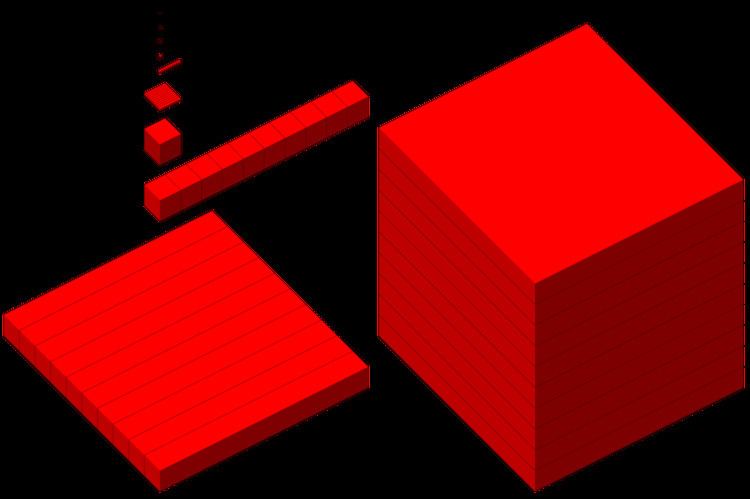1,000,000,000 (one billion, short scale; one thousand million or milliard, yard, long scale) is the natural number following 999,999,999 and preceding 1,000,000,001. One billion can also be written as b or bn.
In scientific notation, it is written as 1 × 109. The SI prefix giga indicates 1,000,000,000 times the base unit.
One billion years may be called eon (or aeon) in astronomy and geology.
Previously in British English (but not in American English), the word "billion" referred exclusively to a million millions (1,000,000,000,000). However, this is no longer as common as earlier, and the word has been used to mean one thousand million (1,000,000,000) for some time. The alternative term "one thousand million" is mainly used in the U.K., or countries such as Spain that uses "one thousand million" as one million million constitutes a billion. The worded figure, as opposed to the numerical figure (one thousand million/1,000,000,000) is used to differentiate between "one thousand million" or "one billion".
The term milliard can also be used to refer to 1,000,000,000; whereas "milliard" is seldom used in English, variations on this name often appear in other languages.
In the South Asian numbering system, it is known as 100 crore or 1 Arab.
1000000007 – smallest prime number with 10 digits.1023456789 – smallest pandigital number in base 10.1026753849 – smallest pandigital square that includes 0.1073676287 – 15th Carol number.1073741824 – 2301073807359 – 14th Kynea number.1129760415 – 23rd Motzkin number.1134903170 – 45th Fibonacci number.1162261467 – 3191220703125 – 5131232922769- 35113^2 Centered hexagonal number.1234567890 – pandigital number with the digits in order.1311738121 – 25th Pell number.1382958545 – 15th Bell number.1406818759 – 30th Wedderburn–Etherington number.1631432881- Triangular square number.1836311903 – 46th Fibonacci number.1882341361 – The least prime whose reversal is both square (403912) and triangular (triangular of 57121).1977326743 – 7112147483647 – 8th Mersenne prime and the largest signed 32-bit integer.2147483648 – 2312176782336 – 6122214502422 – 6th primary pseudoperfect number.2357947691 – 1192971215073 – 11th Fibonacci prime (47th Fibonacci number).3166815962 – 26th Pell number.3192727797 – 24th Motzkin number.3323236238 – 31st Wedderburn–Etherington number.3405691582 – hexadecimal CAFEBABE; used as a placeholder in programming.3405697037 – hexadecimal CAFED00D; used as a placeholder in programming.3735928559 – hexadecimal DEADBEEF; used as a placeholder in programming.3486784401 – 3204294836223 – 16th Carol number.4294967291 – Largest prime 32-bit unsigned integer.4294967295 – Maximum 32-bit unsigned integer (FFFFFFFF16), perfect totient number, product of the five prime Fermat numbers..4294967296 – 2324294967297 – the first composite Fermat number.4295098367 – 15th Kynea number.4807526976 – 48th Fibonacci number.5784634181 – 13th alternating factorial.6103515625 – 5146210001000 – only self-descriptive number in base 10.6227020800 – 13!6975757441 – 1786983776800 – 15th colossally abundant number, 15th superior highly composite number7645370045 – 27th Pell number.7778742049 – 49th Fibonacci number.7862958391 – 32nd Wedderburn–Etherington number.8589869056 – 6th perfect number.8589934592 – 2339043402501 – 25th Motzkin number.9814072356 – largest square pandigital number, largest pandigital pure power.9876543210 – largest number without redundant digits.9999999967 – greatest prime number with 10 digits.The facts below give a sense of how large 1,000,000,000 (109) is in the context of time according to current scientific evidence:
109 seconds is 114 days short of 32 calendar years (≈ 31.7 years).About 109 minutes ago, the Roman Empire was flourishing and Christianity was emerging. (109 minutes is roughly 1,901 years.)About 109 hours ago, modern human beings and their ancestors were living in the Stone Age (more precisely, the Middle Paleolithic). (109 hours is roughly 114,080 years.)About 109 days ago, Australopithecus, an ape-like creature related to an ancestor of modern humans, roamed the African savannas. (109 days is roughly 2.738 million years.)About 109 months ago, dinosaurs walked the Earth during the late Cretaceous. (109 months is roughly 83.3 million years.)About 109 years—a gigaannus—ago, the first multicellular eukaryotes appeared on Earth.It takes approximately 95 years to count from one to one billion in a single sitting.The universe is thought to be about 13.8 × 109 years old.109 inches is 15,783 miles (25,400 km), more than halfway around the world and thus sufficient to reach any point on the globe from any other point.109 metres (called a gigameter) is almost three times the distance from the Earth to the Moon.109 kilometres is over six times the distance from the Earth to the Sun.The possession of assets with total value of 109 United States dollars would place a person among the world's wealthiest individuals.A billion square inches would be a square about one half mile on a side.A piece of finely woven bed sheet cloth that contained a billion holes would measure about 500 square feet (46 m2), large enough to cover a moderate sized apartment.There are a billion cubic millimeters in a cubic meter and there are a billion cubic meters in a cubic kilometer.A billion grains of table salt or granulated sugar would occupy a volume of about 2.5 cubic feet (0.071 m3).A billion cubic inches would be a volume comparable to a large commercial building slightly larger than a typical supermarket.As of July 2016, Apple has sold one billion iPhones. This makes the iPhone one of the most successful product lines in history, surpassing the Sony Playstation and the Rubik's Cube.As of July 2016, Facebook has 1.71 billion users.A small mountain, slightly larger than Stone Mountain Georgia, United States, would weigh (have a mass of) a billion tons.There are billions of worker ants in the largest ant colony in the world, which covers 4,000 miles of the Mediterranean coast.A is a cube; B consists of 1000 cubes of type A, C consists of 1000 Bs; and D consists of 1000 Cs. Thus there are 1 million As in C; and 1,000,000,000 As in D.

